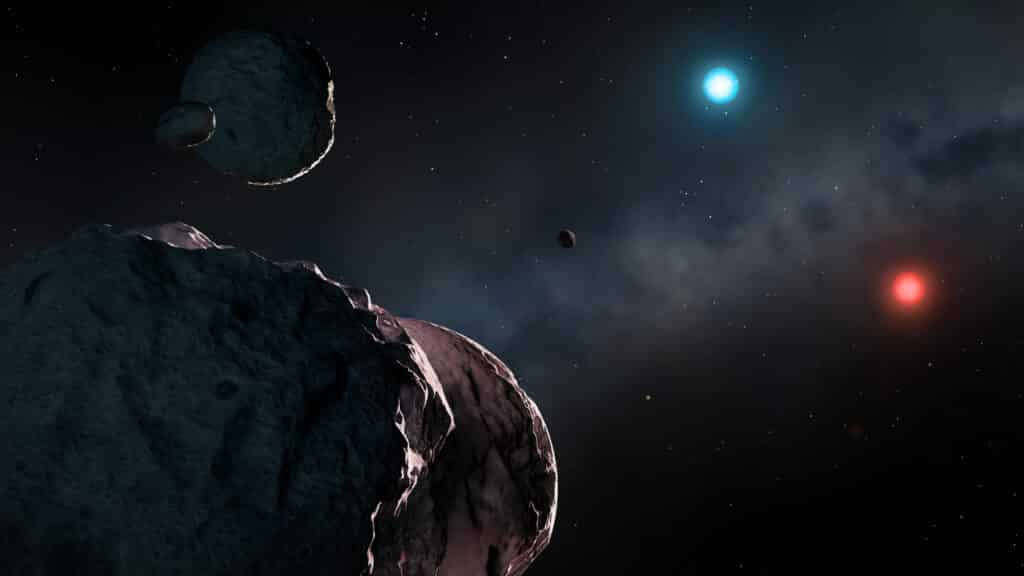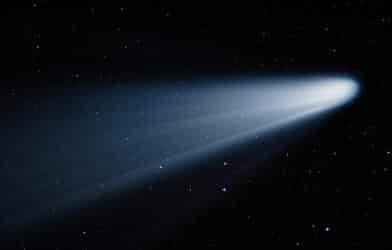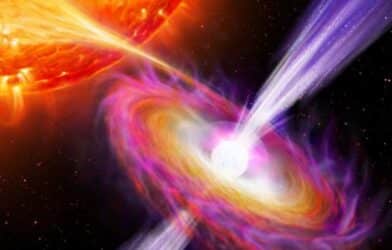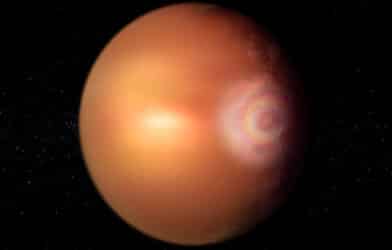The oldest dead star accreting debris from other tiny planets in the Milky Way has been detected by astronomers. It formed more than 10.7 billion years ago and lies 90 light years from Earth, researchers say.
The faint “white dwarf” is swallowing up tiny orbiting protoplanets — a fate that awaits our own sun. It is undergoing a process of shrinking and cooling after burning up all of its fuel and shedding its outer layers. The debris of any orbiting worlds accrete onto the surface.
A British led team modeled the star, named WDJ2147-4035, using data collected by the European Space Agency’s observatory GAIA. It has been cooling for 10.2 billion years. Sodium, lithium, potassium and possibly carbon are accreting onto it.
It is the oldest metal-polluted white dwarf discovered so far, and the reddest in the local galactic neighborhood.
A second star, WDJ1922+0233, is only slightly younger and was polluted by planetary debris of a similar composition to the Earth’s continental crust. It looks blue because of an unusual atmosphere of helium-hydrogen atmosphere.
The red star is nearly pure-helium. A planetary system survived its evolution into a white dwarf. It is the oldest planetary system around a white dwarf discovered in the Milky Way, said the researchers
“These metal-polluted stars show that Earth isn’t unique, there are other planetary systems out there with planetary bodies similar to the Earth,” says lead author Abbigail Elms, a PhD student at the University of Warwick, in a statement. “At least 97 percent of all stars will become a white dwarf and they are so ubiquitous around the universe that they are very important to understand, especially these extremely cool ones. Formed from the oldest stars in our galaxy, cool white dwarfs provide information on the formation and evolution of planetary systems around the oldest stars in the Milky Way.
“We are finding the oldest stellar remnants in the Milky Way that are polluted by once Earth-like planets,” Elms continues. “It’s amazing to think that this happened on the scale of ten billion years, and that those planets died way before the Earth was even formed.”
Astronomers can also use the star’s spectra to determine how quickly those metals are sinking into the core. It allows them to look back in time and determine how abundant each of those metals were in the original planetary body.
“The red star WDJ2147-4035 is a mystery as the accreted planetary debris are very lithium and potassium rich and unlike anything known in our own solar system,” adds Elms. “This is a very interesting white dwarf as its ultra-cool surface temperature, the metals polluting it, its old age, and the fact that it is magnetic, makes it extremely rare.”
The study sheds fresh light on the formation of stars.
“When these old stars formed more than 10 billion years ago, the universe was less metal-rich than it is now, since metals are formed in evolved stars and gigantic stellar explosions,” says co-author Pier-Emmanuel Tremblay, a professor with the Department of Physics at Warwick. “The two observed white dwarfs provide an exciting window into planetary formation in a metal poor and gas-rich environment that was different to the conditions when the solar system was formed.”
The research is published in Monthly Notices of the Royal Astronomical Society.
Report by Mark Waghorn, South West News Service








-392x250.png)



